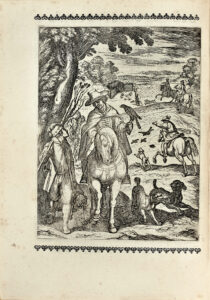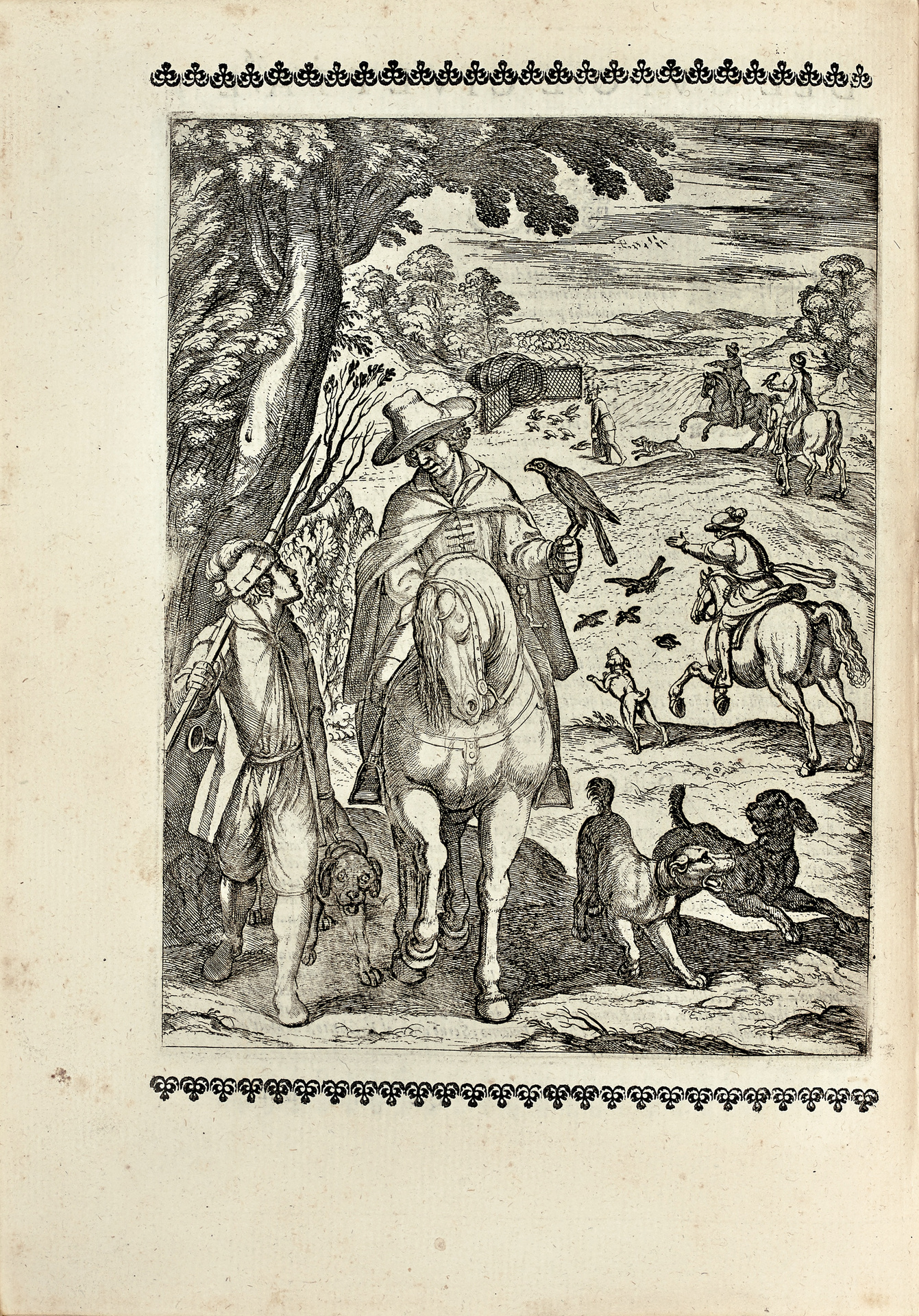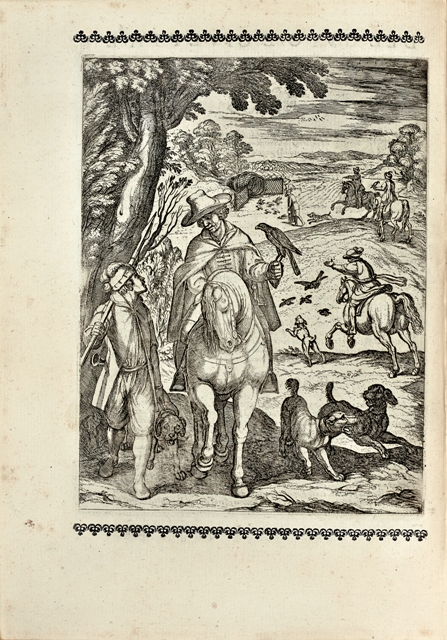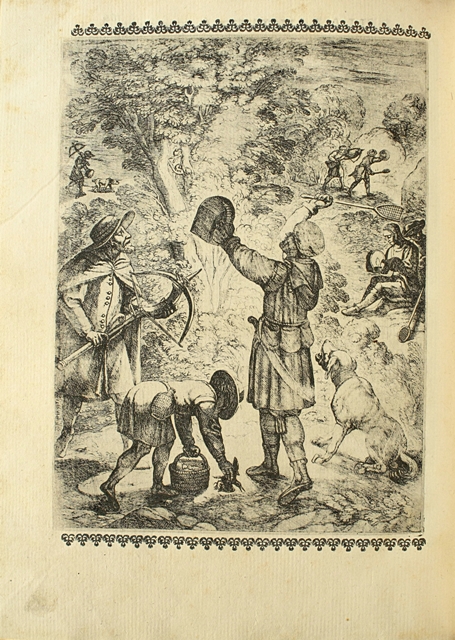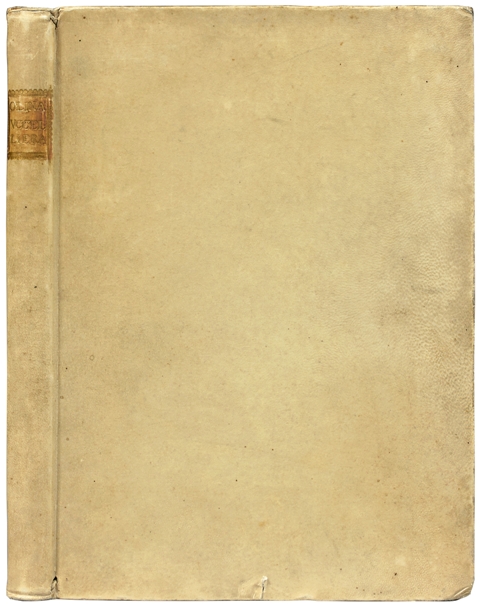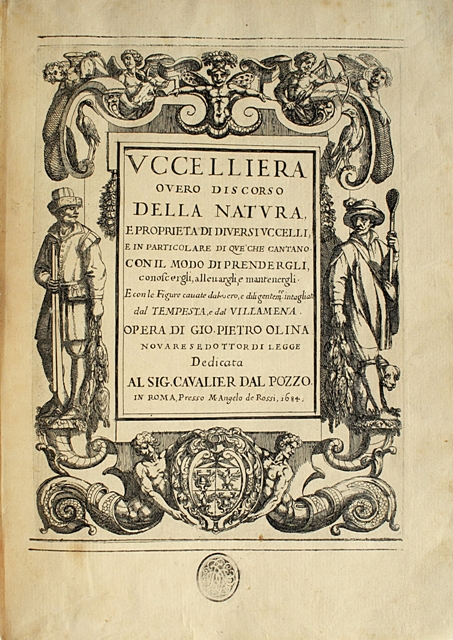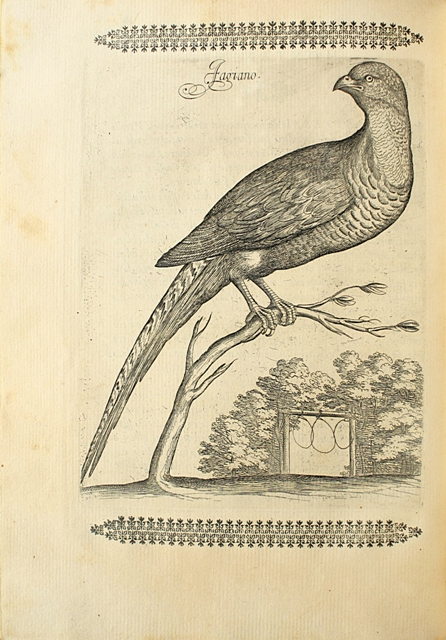Roma, Presso M. Angelo de Rossi, 1684.
Large 4to [277 x 198 mm] of (1) bl.l., (5) ll., 77 ll. (errors in the pagination), (1) bl.l., (6) ll. Full ivory vellum flat spine with gilt title, sprinkled edges. Contemporary binding.
“The second edition and superior to the first” (Schwerdt, II, 49). Souhart 356; Harting 278; Fairfax Murray, Italieni, n°1377.
One of the grêt Italian hunting books illustrated with an engraved title with an historiated frame and with 66 full-page engravings.
« Opera illustrata da numerose figure a pagina intera, incise all’acquaforte dal Tempesta e dal Villamena” (Fairfax Murray).
“The Rome edition, 1684 [is] more bêutiful for the impression” than the first one. (Brunet, 180)
The number of engravings is similar to the one of the first edition printed in Rome in 1622 but here, various plates have been re-engraved: (l.16) Del Pettirosso, (l. 30, misprinted 23) Della Calandra, (l. 36) Della Bubbola and (l. 51) Della Caccia col Bracco a rete.
Jên-Pierre Olina was an ornithologist. He was born towards the end of the 16th century in Orta, in Novara. As he graduated in Law, he settled in Rome, where he practiced the profession of lawyer. Combining his liking for natural history with the one of music, he used his leisure time to crête a collection of singing birds, and made a special study on their habits. From the observations that a long experience brought him to collect, he composed the work entitled Uccelliera, overo discorso della natura e proprieta di diversi uccelli, e in particolare di que che cantano, Rome, 1622, 4to. This edition, though it is less bêutiful than the one of 1684, is sought-after by curious people, because it has the advantage to contain the first prints of the figures engraved by Tempesta and Villamène. Olina’s work contains interesting details on the way to catch birds, on their education, their food, their disêses and the trêtment to apply. It has been revised by Buchoz in the ‘Amusements innocents’ containing the ‘Traité des oisêux de volière’ and the ‘Parfait oiseleur’, Paris, 1774, 12mo.
"Chiefly song-birds are represented of the natural size (pp. 1-50), but in addition (pp. 51-81) there are plates of partridge and quail netting; partridge-hawking with the Goshawk; trap to catch a Sparrow-hawk; and illustrations of the mode in which bird-catchers employ the Little Owl (Civetta) and falconers the Eagle Owl (Gufo)." (Harting, Bibliotheca Accipitraria, 278)
A bêutiful copy, particularly wide-margined (height: 277 mm vs 274 mm for the Schwerdt copy) preserved in its original vellum binding.
